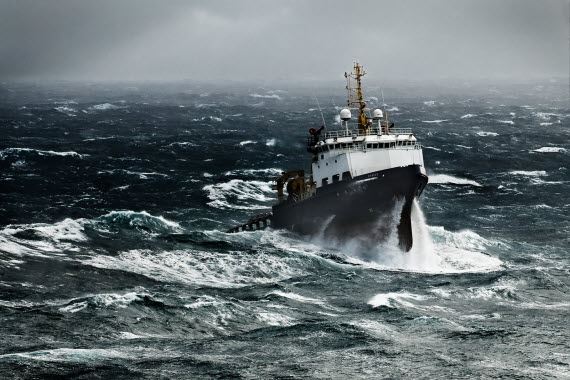
|
|
Automatic vessel station-keeping in predetermined positions is essential in a number of offshore petroleum industry operations. Photo: Lars Grepstad |
In 1990, the Royal Norwegian Council for Scientific and Industrial Research awarded its most prestigious prize to Jens Glad Balchen (1926 – 2009), NTNU professor and SINTEF consultant, and the undisputed leading light of Norwegian cybernetics.
The group that grew around this Nestor brought forth a number of products. In making the award, the jury referred to the industrial success of “Albatross”, a dynamic positioning system for ships.
Keeps vessels in position when it counts
The system, known as Albatross ADP503, was developed as a result of close collaboration between NTH/SINTEF and what was then Kongsberg Våpenfabrikk (KV) in the seventies.
The system automatically keeps a vessel in a given predetermined position, irrespective of external forces such as the wind, currents and waves, by means of its propellers and thrusters. This is essential in a wide range of offshore petroleum industry operations.
SINTEF developed the software that controls the system, whose other components came from Kongsberg.
New industry in well-known industrial city
Albatross ADP503 is based on new and to some extent revolutionary technology, and it soon outcompeted existing systems.
The project triggered a great high level of activity in Kongsberg in maritime control systems. The business is now part of Kongsberg Maritime, and employs more than 100 people.
The first vessel to be fitted with Albatross ADP503 arrived on station in the North Sea on May 17, 1977. Today, the Kongsberg company delivers around 200 systems a year.
